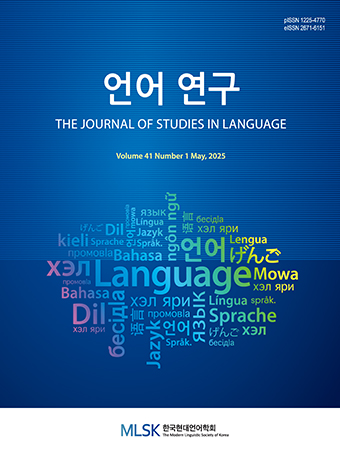Research Article
Abstract
References
Information
This study aimed to determine how Korean college students in online English courses focusing on presentation and communication skills perceived Zoom as a video conference tool. This study involved 133 juniors at a university of education specializing in primary education. The data for the study were obtained using an online questionnaire with 11 five-point Richter scale questions and six open-ended questions and were analyzed quantitatively and qualitatively. The findings of this study were as follows: first, the overall satisfaction level of online classes using Zoom was very high (4.39), and 87% of students indicated the series of intensive practices in the Zoom classes were effective; second, practice in breakout rooms with 2-4 students were highly effective and sharing feedback in the breakout rooms were generally received positively; third, students’ responses showed that Zoom was a convenient and efficient tool for online classes; fourth, approximately 89% of the students would prefer to have online classes included as a part their face to face regular classes, and 80% of the students want to have up to half or one-third of their classes online.
- 김혜정. 2020. 줌(Zoom)을 활용한 온라인 비대면 영어 수업의 방향 탐색. The Journal of the Convergence on Culture Technology (JCCT) 7, 284-290.
- 신수지, 조하림. 2021. “줌앱·줌폰...팬데믹 끝나도 줌의 신화는 계속될 것.” 조선일보, 2021년 1월 3일 경제면.
- Hu, J. (Monika). 2019. Share/Hybrid/Online Course Using Zoom. Blended Learning in the Liberal Arts Conference. Vassar College.
- Kim, H. J. 2020. The Efficacy of Zoom Technology as an Educational Tool for English Reading Comprehension Achievement in EFL Classroom. International Journal of Advanced Culture Technology 8, 198-205. DOI: https://doi.org/10.17703/IJACT.2020.8.3.198. 10.17703/IJACT.2020.8.3.198.
- Kim, H. J. 2021. Exploiting Directions in On-line Non-face-to-face English Class Using Zoom. The Journal of the Convergence on Culture Technology 7, 284-290. DOI: https://doi.org/10.17703/JCCT.2021.7.1.284. 10.17703/JCCT.2021.7.1.284.
- Lee, A. R. 2021. Breaking through digital barriers: Exploring EFL students’ views of Zoom breakout room experiences. Korean Journal of English Language and Linguistics 21, 510-524.
- Mohamed, K. 2021. The impact of utilizing breakout rooms in ESL distance learning from students’ perspectives [Unpublished manuscript]. Faculty of Education, British University in Dubai.
- Moorhouse, B. L. 2020. Adaptations to a face-to-face initial teacher education course ‘forced’ online due to the COVID-19 pandemic. Journal of Education for Teaching. DOI: 10.1080/02607476.2020.1755205. 10.1080/02607476.2020.1755205
- Mu’awanah, N., S. Sumardi and S. Suparno. 2021. Using Zoom to Support English Learning during Covid-19 Pandemic: Strengths and Challenges. Jurnal Ilmiah Sekolah Dasar 5, 222-230. 10.23887/jisd.v5i2.35006
- Wiederhold, B. K. 2020. Connecting through technology during the coronavirus disease 2019 pandemic: Avoiding “Zoom fatigue”. Cyberpsychology, Behavior, and Social Networking 23, 437-428. 10.1089/cyber.2020.29188.bkw 32551981
- Publisher :The Modern Linguistic Society of Korea
- Publisher(Ko) :한국현대언어학회
- Journal Title :The Journal of Studies in Language
- Journal Title(Ko) :언어연구
- Volume : 37
- No :4
- Pages :463-474
- DOI :https://doi.org/10.18627/jslg.37.4.202202.463




 The Journal of Studies in Language
The Journal of Studies in Language






